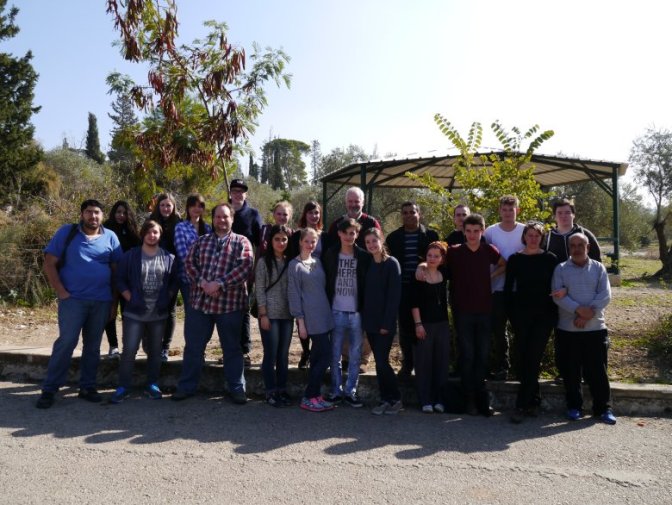Home > Oasis of Peace > Visiting > Visitors Center > School class visits destroyed Palestinian villages
School class visits destroyed Palestinian villages
Monday 6 January 2014, by
All the versions of this article: [Deutsch] [English]

As part of their exchange to the Talitha Kumi School in Beit Jala, students of a Hamburg school, Gymnasium Finkenwerder, approached Wahat al-Salam / Neve Shalom to organise a trip that would present an alternative narrative from our region.
Accordingly, Umar Ighbariyeh, a member of our community took them on a tour of the nearby Latroun area. He works for Zochrot, an organisation that documents the history of Palestinian villages destroyed in 1948 (the Nakba) and 1967 (the Naksa).
We visited the remains of a former Palestinian village called Imwas (or Emmaus) which, along with Yalu and Beit Nuba villages, was destroyed in 1967, after a failed attempt by Israel to occupy the area in 1948. Today the lands of Imwas and Yalu fall within the bounds of Ayalon-Canada Park under a pine forest planted by the Jewish National Fund.
Old stones from houses have been reused to decorate paths and much of their remains are overgrown. While walking through the park that was once a village, we came to a halt. The place where we stopped looked ordinary, but Umar told us that this used to be the village cemetery. Trees have been planted there and the headstones are now only rubble.
Although this looks like an ordinary park at first sight, closer observation reveals iron rods from roofs and overgrown wells. Only a single battered sign reminds visitors of the village Imwas with its 2000 inhabitants, that once stood here, and this was installed only after the Zochrot organisation engaged in a determined struggle with the Jewish National Fund (this story is told in the postscript to an earlier article). Still, the sign does not tell the story of how the inhabitants of Imwas, Yalu and Beit Nuba were evacuated to Ramallah during the 1967 war with the promise they could come back once the war was over. However, the three villages were systematically demolished shortly after their inhabitants’ departure, and they were forbidden to return.
Today, Umar holds up two photos with the same view of the village. One, from the 1950s, shows a street with houses, and the other, taken a decade later, shows only a desolate hill.
Pine trees grow fast, covering all remnants of these Palestinian villages. Yet earlier historical remains, such as a Roman bath house, have been preserved as attractions. Families come here for picnics and gatherings.
The students learned how a story can be influenced by the standpoint of the story teller. Zochrot helped them see an alternative picture of these events than the version that is usually presented. In the afternoon, the group was shown around Neve Shalom / Wahat al-Salam, and one of our members told them the story of our village.



